Pairing uncut and polished stones in a single jewel is a striking way to evoke the earthy origins of fine gems.
High jewelry glories in the symmetry and sparkle of its finished gemstones. So it was a significant shift in aesthetic when some houses included rough gems in their designs last year, such as Cartier’s Ryu necklace with partially cut yellow diamonds beside tiny brilliants.
De Beers popularized incorporating rough stones into high-end jewels when it launched its Talisman line in 2005, featuring tiny colored rough diamonds in textured gold. However, the aesthetic dates back to jewelry artist Andrew Grima in the 1960s, who saw the beauty in the organic shapes of the raw material.
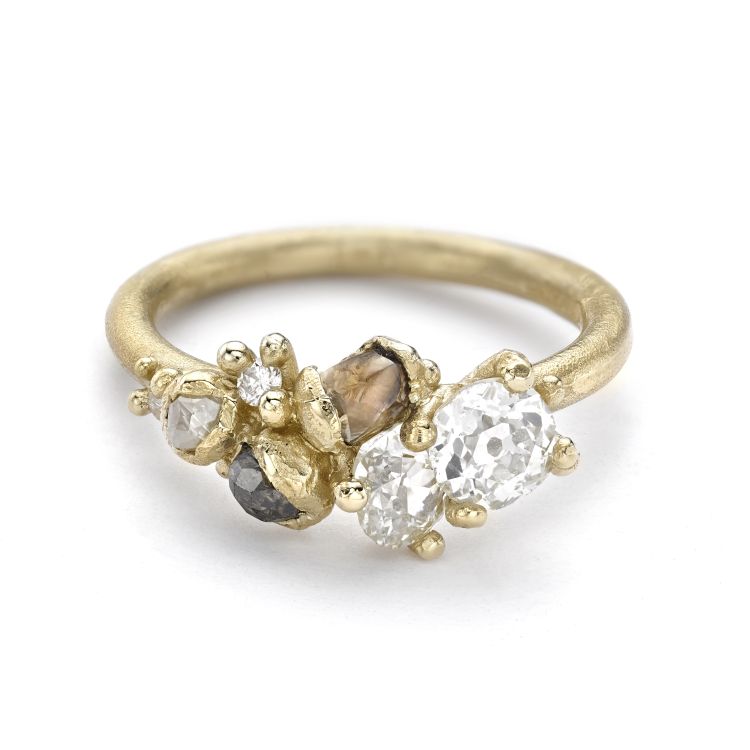
Bringing out the best in each other
A contemporary enthusiast is New York-based jeweler Kimberly McDonald, who trims geode and agate slices with diamonds. “There’s nothing we can create today that even comes close to the beauty of what nature has created over millions of years,” she says. “I love the juxtaposition of rough and fine.”
So does Ruth Tomlinson. The British designer, whose pieces sell at retailers across the US, started seeking out small raw gems on her travels through India and Sri Lanka, and enjoys pairing them with polished ones in textured gold settings. “I’ve always questioned perceptions of preciousness through my work,” she reflects. “A raw diamond is as precious as a cut diamond, materially speaking, but it looks completely different.” Juxtaposing the two “amplifies this conversation, as well as looking beautiful.”
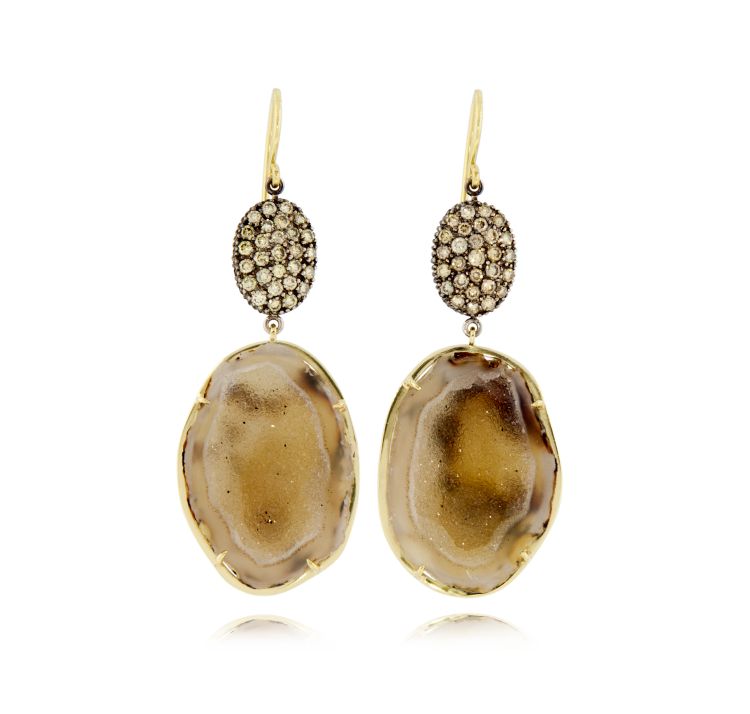
Kimberly McDonald naturally golden geode and green diamond earrings. (Kimberly McDonald)
Dig that energy
Creating an intimate relationship between mineral and jewel is a sleeper trend that multiple brands have explored, including Pippa Small, byAngeline, Judy Geib, Jia Jia, and Pamela Huizenga. All of these companies’ designs appeal to consumers who “want something that is individual [and who] have a deep appreciation for the nature and energy of these stones,” says McDonald.
One root of this modern trend may be the hippie practice of wearing gem crystals for their perceived healing properties. Bali-based designer Jia Jia Zhu, a former women’s-wear and jewelry buyer at department store Bergdorf Goodman, sets rough crystal specimens in bands of gold and diamonds.
“Some [people] may feel more connected to polished stones, others to more natural stones,” says Zhu. “For me, it would be the more natural state.”
The protective talismanic qualities of the gemstones resonate with customers, she adds, as was apparent from her eponymous brand’s sales figures during the pandemic.
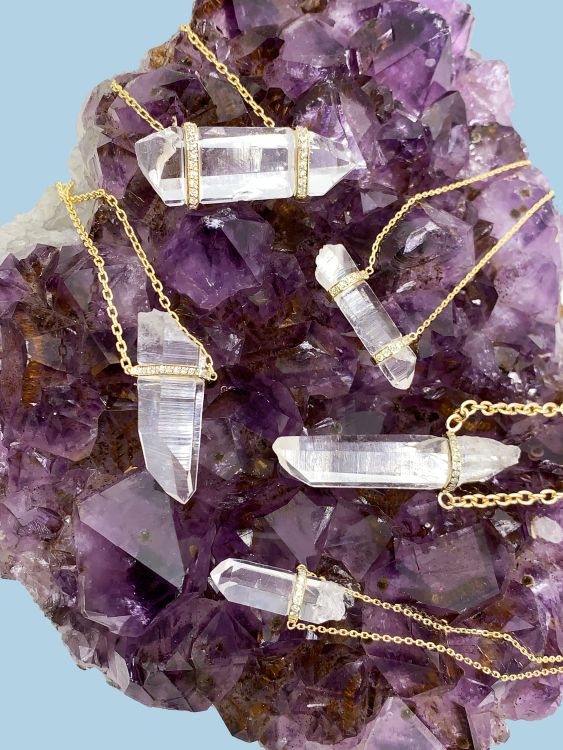
Selling the imperfect
Retailer April Higashi, owner of Shibumi Gallery in San Francisco, California, is a fan of the rough look. “I love the unusual,” she says. “Diamonds that look different in different light and angles are more interesting than brilliant-cut diamonds that look like the light switch is always on.”
For Paul Schneider, the aesthetic of rough and smooth is a niche product. “It is not a common sale, but it’s a great situation when you are able to express the fact that this [gemstone] is as G-d created it and straight out of the ground,” says the cofounder of jewelry boutique Twist, which has branches in Portland, Oregon, and Seattle, Washington. He points to designers like Small and Geib, who seek out these stones “because they’ve got a life to them, with their asymmetry and imperfections.”
Huizenga, too, embraces nature’s imperfections. The American lapidarist uses raw gems in most categories of her bold, unusual jewelry. “I think they lend themselves to just about anything,” she says. “Multi-stone pieces are fun because it is easier to incorporate both raw and finished stones, showing the differences. Kind of a before-and-after effect from mother nature. But also, a single raw diamond can make quite a stunning ring or centerpiece for a necklace.”
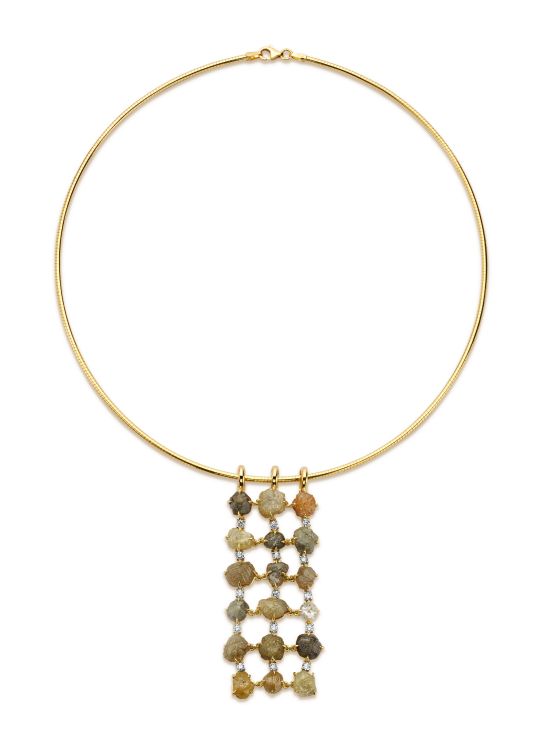
The nitty gritty
The terminology that sellers use for rough stones varies. Tomlinson prefers the word “raw,” while Schneider opts for the consumer-friendly “rustic.” Higashi goes for “rustic diamonds with inclusions,” and explains to clients “why the inclusions make the stone look so dynamic and unique, and how they are made, and why there are colors in these diamonds.”
Having a general knowledge of gems is important for those retailing this style of jewelry, Huizenga believes. “The more educated they can be about crystal structures, how gemstones form, different [sources] around the world, and other key facts, [the better they’ll be able to] draw the customer in and educate them on the allure of natural raw gemstones.”
Main image: A selection of cluster rings. (Ruth Tomlinson)

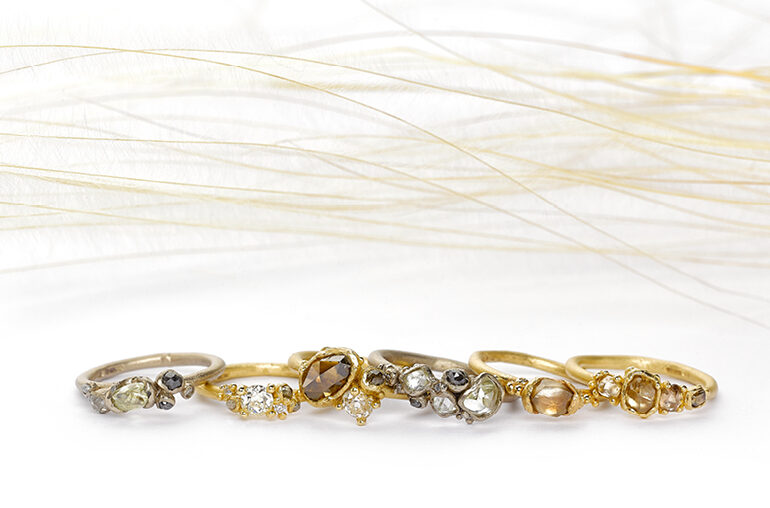
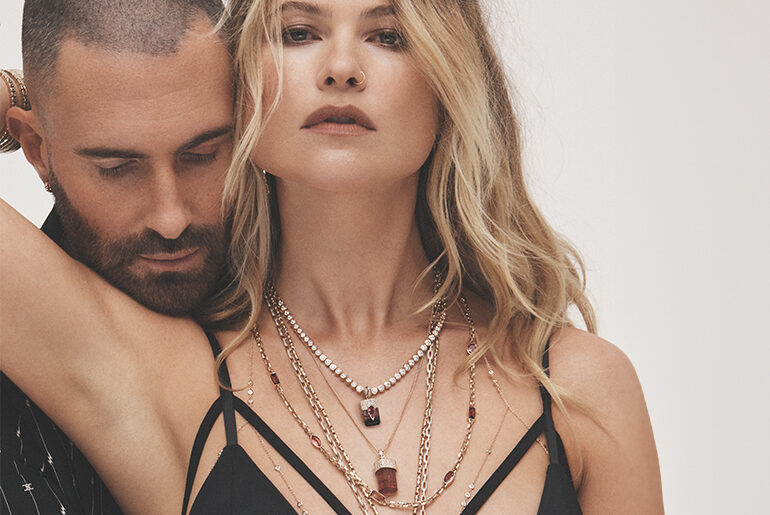
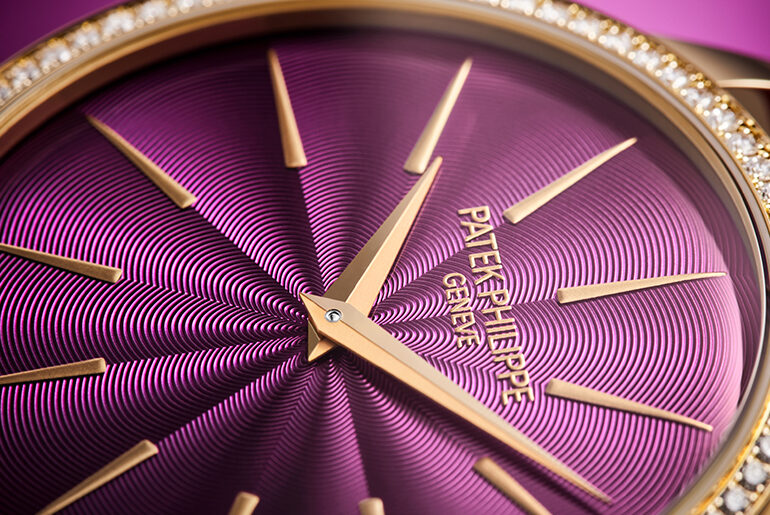
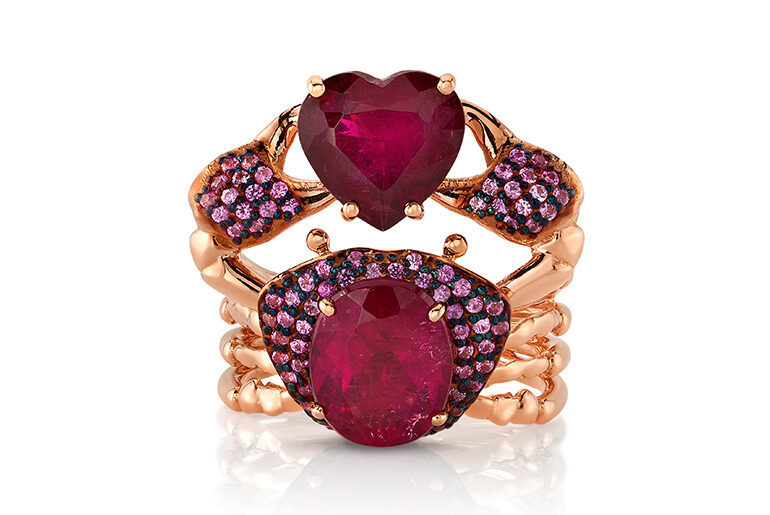
Comments are closed.